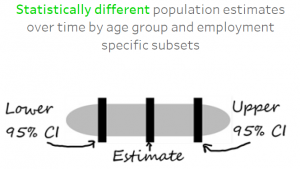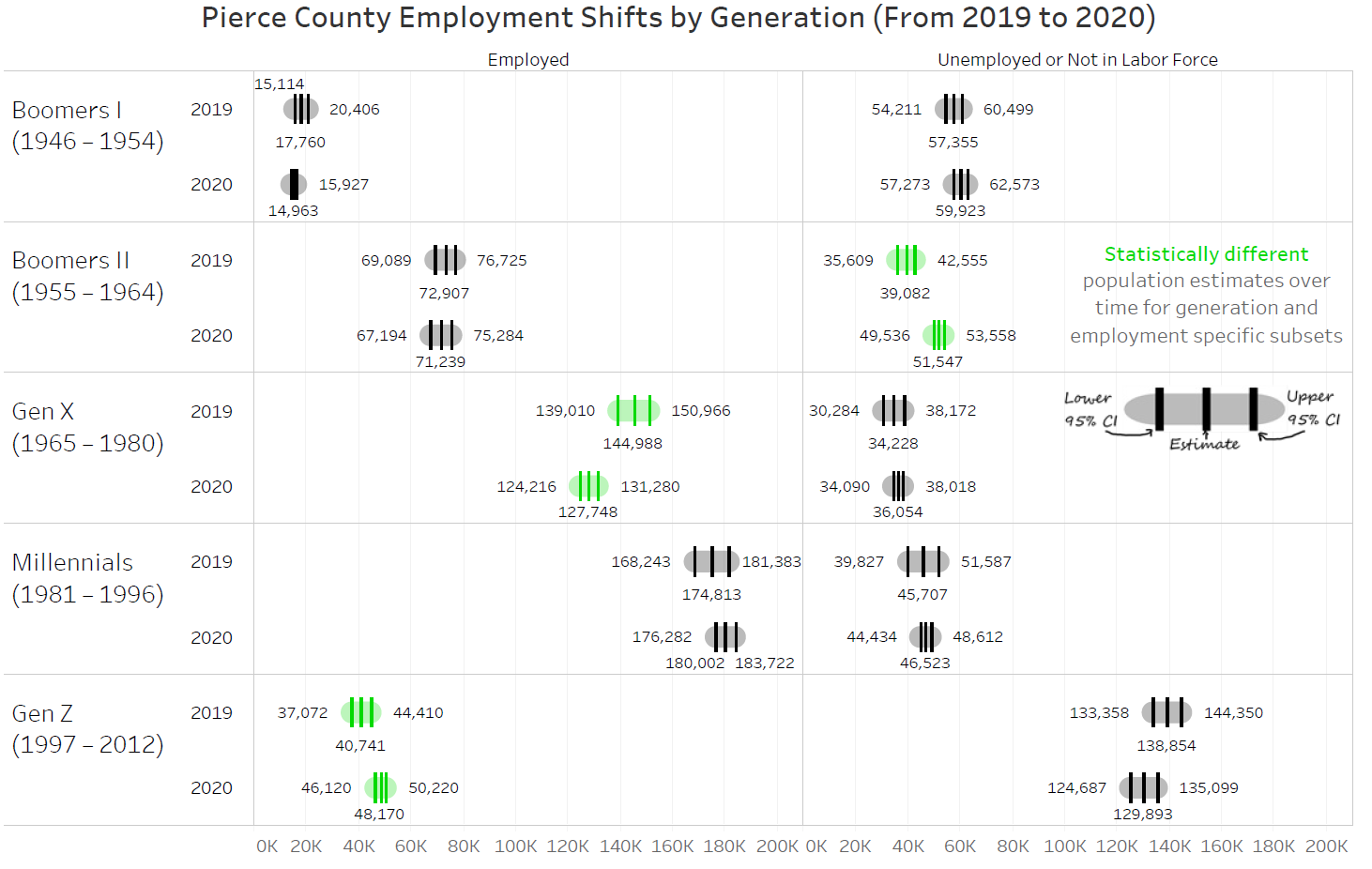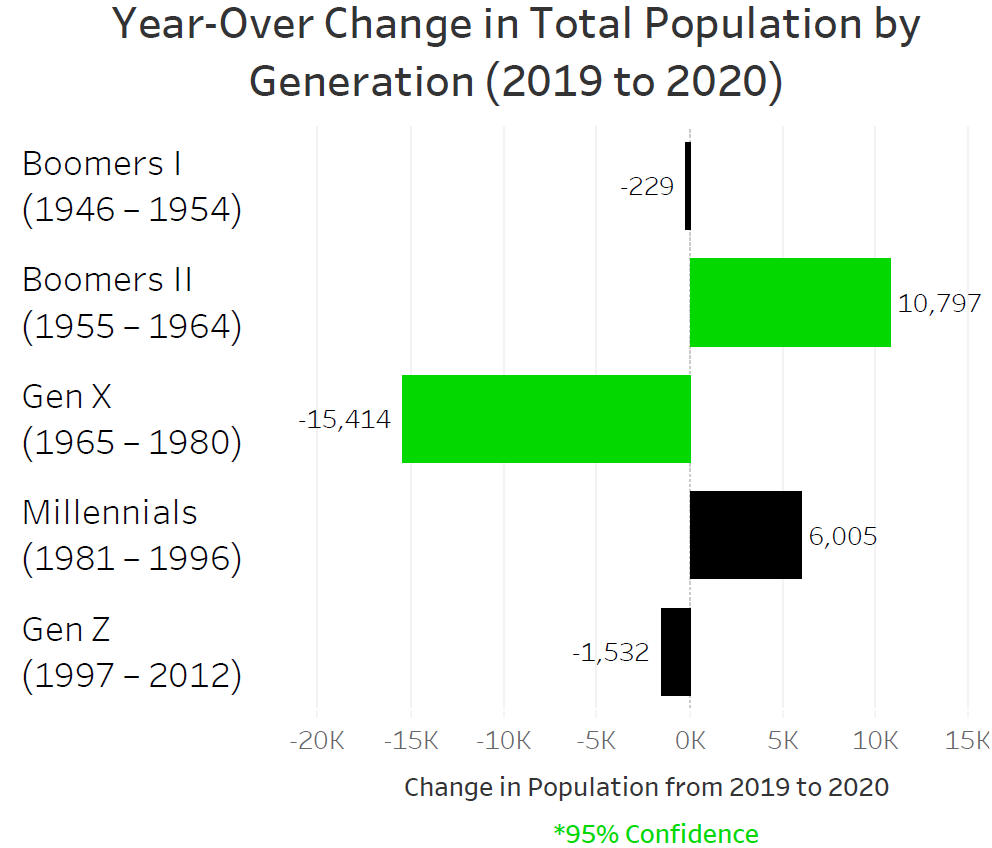February 9, 2022
Pierce County unemployment has sunk to the lowest levels in more than two decades. Meanwhile, employers are struggling to find the workers they need to keep up with demand. A low unemployment rate is categorically a good thing – but it represents the approaching limit that employers are feeling. Namely, there is just less available labor.
The question on our minds, at least, is why? From a workforce data lens our gut reaction was that it must have something to do with labor underutilization. However, while we don’t have localized alternative unemployment measures to say for our region – national U-6 rates are way down and still dropping.
In this analysis we wanted to explore a hunch that, at least in part, some of the labor shortage may be due to an expected spike in 2020 retirements among older workers concerned about COVID. This is showing up in more current national trends but we wanted to see if it was true locally. We’ll go ahead and say that it’s not because of retirements (or at least not yet) but the real shifts are just as interesting.
To do this we need Census data, specifically Public-Use Microdata Samples. Comparing 2019 and 2020 PUMS data we found, not surprisingly, a statistically significant increase in the number of residents 65 and over Unemployed or Not in the Labor Force (up over 15,000). The surprising bit was that there wasn’t actually a decrease in the number of workers 65 and over – in fact, that estimate was up too, over 2,000. (see confusing chart below).


Ever persistent, we dived deeper into the rabbit hole, breaking up the PUMS estimates by rolling generational categories. Consistent with the 65+ threshold, we found an increase among Boomers II* Unemployed or Not in the Labor Force (+12,465), but with little change in the number employed.

*Following Beresford Research’s approach, we broke up the Boomers generation into two different cohorts for analysis.
To give the younger generations some credit – it’s well due – we’ve seen a clear uptick in the number of Millennial workers (5,200+) and – though partly expected given that they’re still aging into the workforce – a 7,400+ increase in Gen Z workers.
The real surprise came from Gen X. In Pierce County we saw an estimated drop of over 17,000 residents employed in this group. To put that into context, while most other generations retained or added to their total employment between 2019 and 2020, Gen X saw a 12% year-over decline in total employments. Just as confusing as with Boomers, only reversed, we saw very little change in the number of Gen X unemployed and not in the labor force.
 Looking at just the demographic shift and ignoring employment status (right), we get some clarity, and a whole mess of other questions. Between 2019 and 2020, the total number of Pierce County Boomers, well…boomed – up nearly 11,000. Conversely, the population of Gen X residents plummeted over 15,000.
Looking at just the demographic shift and ignoring employment status (right), we get some clarity, and a whole mess of other questions. Between 2019 and 2020, the total number of Pierce County Boomers, well…boomed – up nearly 11,000. Conversely, the population of Gen X residents plummeted over 15,000.
Unfortunately, we don’t know why these shifts occurred or, more importantly, if they’re sustained demographic trends. We do know that our county is still growing, but that it’s also aging and most of that growth is happening among residents no longer in the labor force. At the same time, we’re seeing the effects of a sizable population loss among a generation of workers that were likely more experienced and skilled.
As we look ahead, we’ll want to monitor these and other demographic shifts that will impact our region’s economic future as well as the sustained impacts of the pandemic. Not that we need more reasons, but it’s a good reminder of how important it is that we have the capacity to train and support our next generation of workers. It also highlights the need for innovative solutions for upskilling and retaining of our current workforce. Our future labor supply will depend on it.

